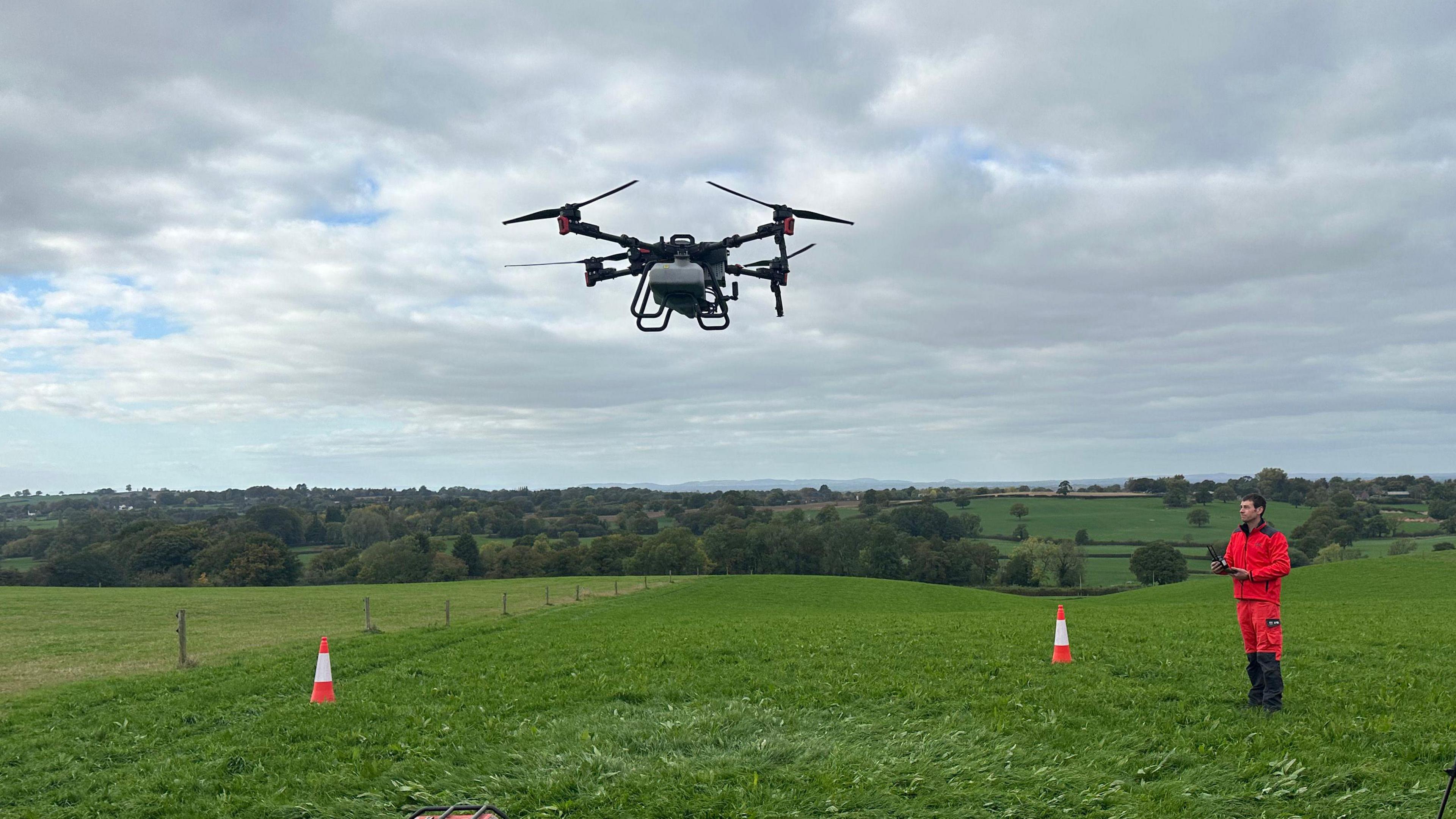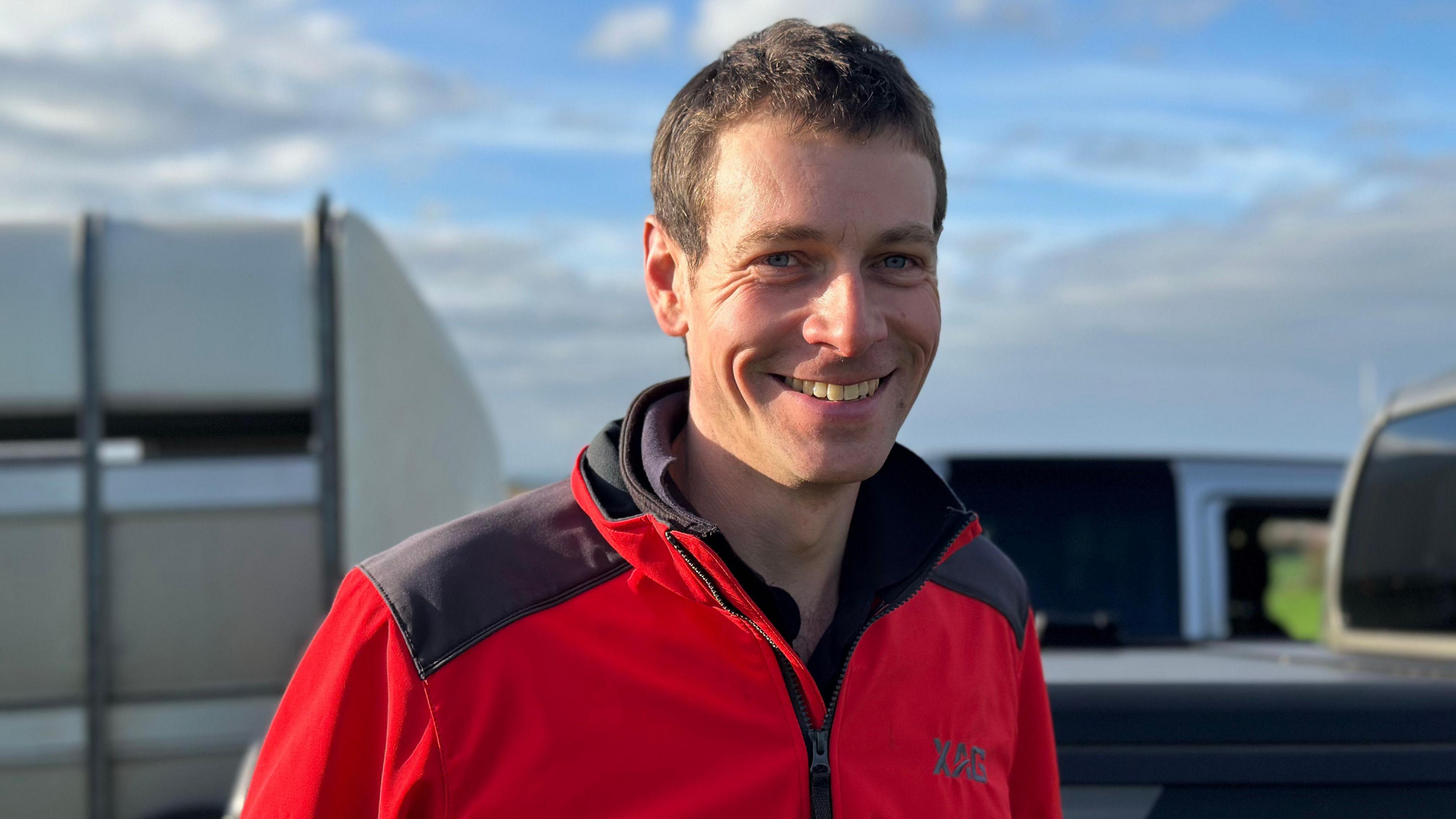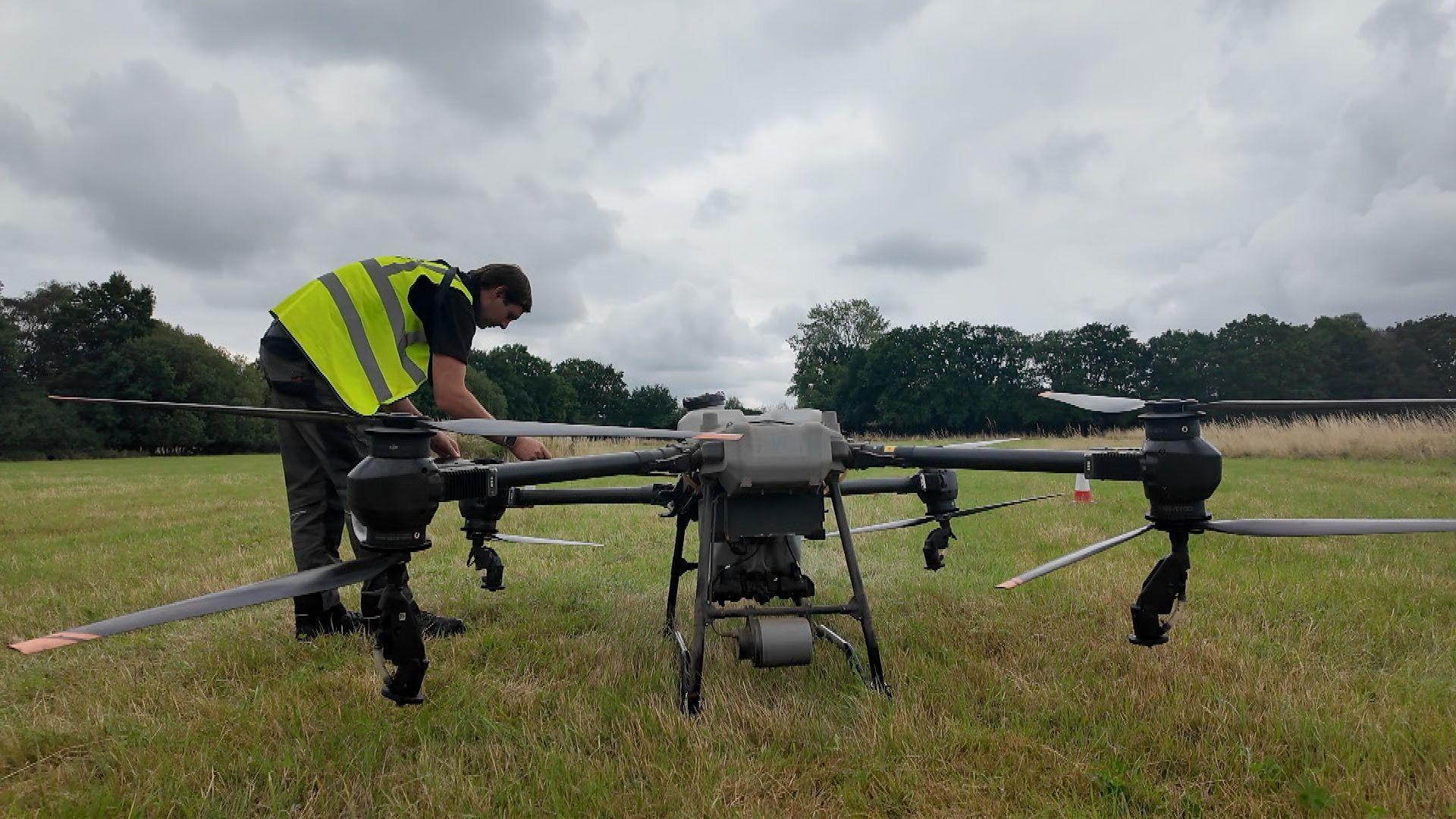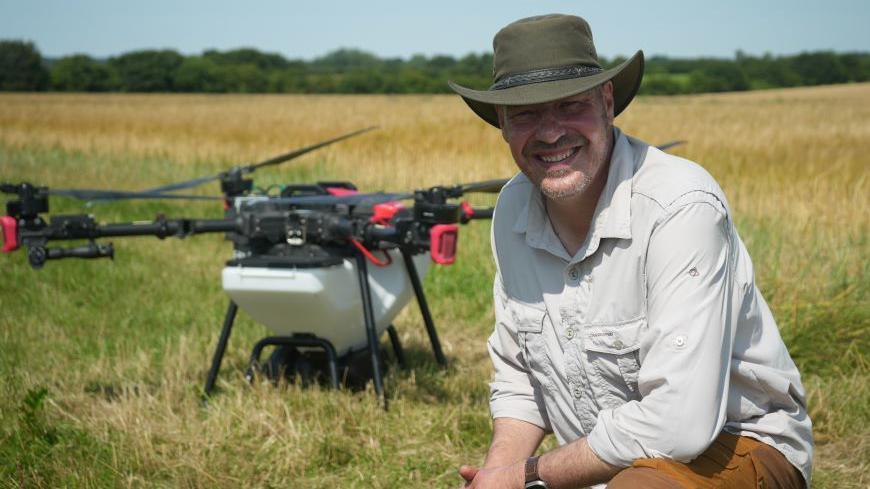Why drones could be the future of farming

Farmer Frazer Bloor said the drone was a safer method for applying liquids and seeds
- Published
Almost 10 years ago, I stood at Harper Adams University inside a huge hall, watching a massive drone move around the space spraying the floor below.
It was perfectly technically capable of being used outside to treat a crop with fertiliser or even pesticides, but all of that was then banned.
Today, I'm standing on a Shropshire hillside covered in a mix of herbs and grasses planted by an agricultural drone, which swoops overhead delivering a spray of liquid seaweed fertiliser.
It's a massive drone, 3m (9.8ft) from spinning blade to spinning blade and weighing up to 160kg (352 lb).
The large batteries it uses charge so quickly and generate so much heat that they have to be water-cooled.
The technology has certainly improved but what has really changed, and very rapidly, is the attitude of the government.
Once the use of large drones was frowned upon, especially if you wanted to drop stuff out of them or spray things, but now the regulations are evolving and agricultural drones are taking off.

Frazer Bloor said the drone was "a lot safer" for hillside fields
Driving much of this is a Stoke-on-Trent company called Autospray Systems.
Rob Pearson, its CEO, explained to me: "We train the farmers to use the kit and then sell them the machines."
The firm is also helping to shape policy, he said, through telling regulators that since farmland is usually remote and private, flying large drones overhead is safe and has huge benefits.
"Flying means no heavy tractors compacting the soil," Mr Pearson said.
In some remote or very hilly areas it is too difficult or even dangerous to use tractors, but none of that is a problem for a drone.
Flying the drone is Shropshire dairy farmer and drone pilot Frazer Bloor.
"The drone is a lot safer for applying liquids and seeds on these hills," he told me.
The traditional way to seed grass on hills is to feed it to the cattle and let nature take its course.
Flying a drone allows for much more accurate planting and, today, even a boost of natural fertiliser.
Of course, the drone could just as easily apply more traditional chemical fertiliser, pesticides and fungicides but, for now, that is still not allowed.
However, according to Mr Pearson, there are moves being made to alter this.
Today, 50 of these drones are in the air across the country and the prediction is that will be 500 by the end of next year.
"Everyone is committed to making that change happen," Mr Pearson said.
Get in touch
Tell us which stories we should cover in Staffordshire
Follow BBC Stoke & Staffordshire on BBC Sounds, Facebook, external, X, external and Instagram, external.
Related topics
- Published22 August

- Published7 August

- Published20 July 2024
